Nikon’s ‘Worst’ and ‘Best’ Zoom Lenses Compared
![]()
I’m going to preface this by saying that this isn’t a lens review article, there are many photographers better suited for this topic, so if you’re after refraction index comparisons and chromatic aberration charts this article probably isn’t for you.
This article is, however, my personal thoughts on three Nikon zoom lenses and their resulting images but also a broader look at how we as photographers covet lenses and other photographic gear. Is the latest and greatest piece of kit actually worth the investment?
Let me set this up and step back a couple of months and say that I’ve been fortunate enough to see a lot of growth in my career recently but maybe not in the traditional sense. No I haven’t picked up any major campaigns from Nike or Prada but I have seen a large growth in other areas namely socially and from a larger more global audience. I’ve done a lot of interviews in that time and I’ve even spent a couple of weeks in the US shooting an extensive training video regarding my lighting, equipment and photographic techniques.
The point I’m trying to make here isn’t about me blowing my own trumpet but about a common theme that started to run through these interactions with other industry professionals.
During these interviews and Q&A sessions the question about gear inevitably comes up.
What gear do you use to create your images?
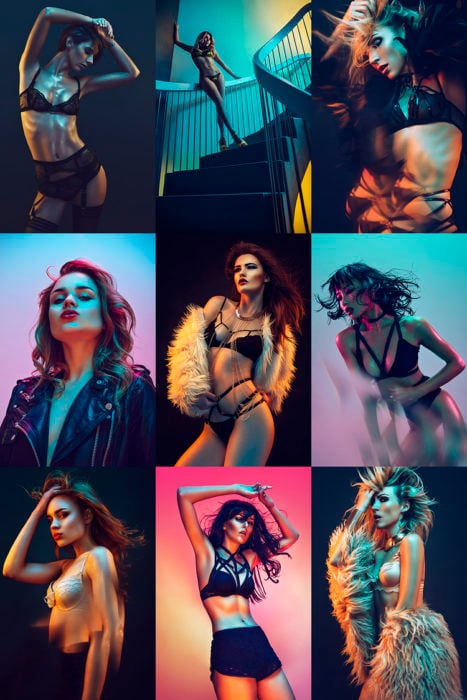
It’s a valid question and one that we’re all interested with in todays market because no matter the techniques we use we still need tools to implement them. After the question is asked I would always simply reel off the key pieces I use which everybody cares about: lighting, camera body and lenses.
My answer is of course always the same as I’ve been using the same kit for many, many years: Bowens lighting, Nikon D600 body and a 28-105mm f/3.5 lens. What was interesting to me was that the response to my answers was always the same too.
Wow, that’s awesome, you take your stunning images using that equipment?
At first I didn’t really think anything of it but after a while it started to nag at me. Essentially the response they’re giving is ‘Wow, that’s awesome, you take your stunning images with that old, outdated equipment?’ They are absolutely correct of course, yes I do.
I have six Bowens strobes that I’ve had nearly 15 years now, my Nikon D600 came out in 2012 and can be picked up for around $400 and my workhorse lens was over a decade old.
I am not what the industry refers to as an ‘early adopter’
The thing is that my kit just works, it does what it’s supposed to do and it creates the images that I want, but I did start to feel a little guilty, almost like a fraud. I’m a professional photographer, I make my living from photography, surely I should have the best possible photographic equipment to take the best possible photographs right?
So the nagging in the back of my mind finally got the better of me and I decided to ‘invest’ some money back into my craft. The question was where to start, my lighting, camera or my lenses?
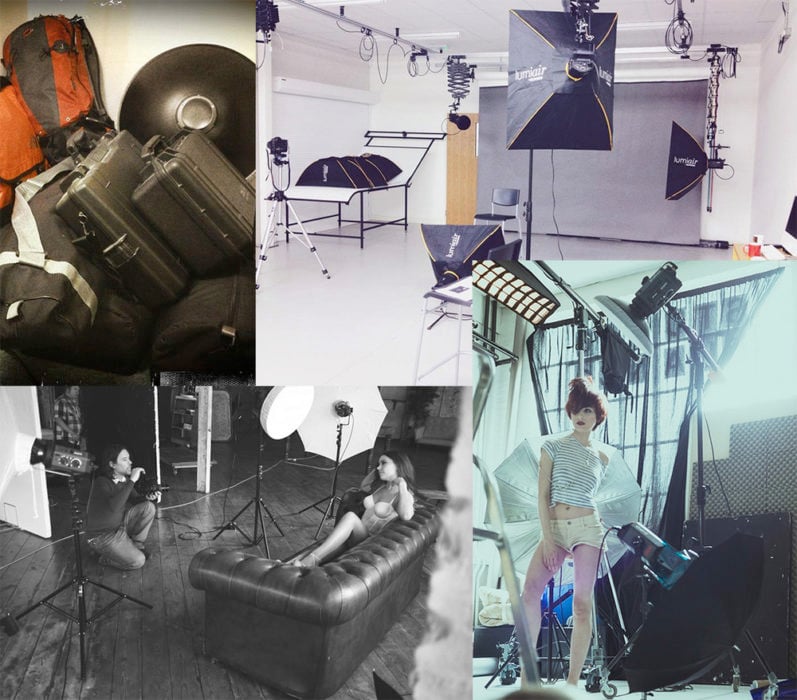
Lighting
My strobes produce light, and unless I missed an issue of New Scientist recently light still travels at the same speed and still in a straight line, I didn’t feel that new lighting was going to make a huge difference to my shots.
Does modern lighting offer more control and more convenience? Yes, it absolutely does, but it still produces light so I didn’t feel a new investment there would net me career changing results.
Camera Body
As of August 2016, Nikon has released 7 new full-frame DSLR cameras in the four years since my D600 was released in 2012, and this doesn’t even include the 8 cropped sensor bodies they’ve also brought to market in that time.
Has camera technology moved on? Sure, but is it an evolution or a revolution we’re seeing?
Prior to my D600 I had a Fuji S2, it was Fuji technology in a Nikon body that took Nikon lenses. That camera did serious work and offered insane results for a cropped frame 6 megapixel camera. I stuck with the Nikon lens mount and waited ever so patiently for Nikon to introduce that D600 full-frame DSLR.
Canon had their full frame powerhouse 5D Mk II in 2008 but I held my ground with the other nervous (and very patient) Nikon shooters and waited for the D600. It was well worth the wait in my opinion, and I absolutely love my D600, but I personally don’t think there has been a newer model that’s been released that would change my game considerably.
I use my camera on manual mode 100% of the time and I’ve seen about two menu screens the whole time I’ve owned it. I don’t personally need all the picture modes and effects, it shoots RAW and in full frame, beyond that the new camera models offer me luxuries but not necessities.
![]()
In late 2011 I shot this album cover for musician Dan Le Sac. The shot was taken on my 6 megapixel Fuji S2 camera with my old Nikon 28-105mm lens. I shot the image as he and his record label had requested, but it later transpired that they would go on to release the image heavily cropped like you see here (oddly no subsequent retouched or enlarged file was requested).
The full un-cropped version has never been shown and the cropped image was used for everything from album art to Adshel’s. With those bus shelter Adshel’s being nearly 2 meters by 1.5 meters, that is a terrifying crop to use from a 6 megapixel camera and old lens and I was literally stunned as to how well the image stood up to this type of enlargement.
Lenses
So finally we come to lenses. Lenses are often seen as the soundest investment you’ll ever make in photography. Your ‘glass’ will very often outlive all other equipment you own and they will often see you through multiple camera body purchases.
For example, the current Nikon F-mount lenses have been around since 1959! I don’t want to sound like a Nikon fan-boy here but that is insane. To think that something that was designed and engineered at a time when we barely had a vaccine for Polio, no man had been to space, and at a time before computers even had a name, Nikon made a lens mount that is still being used to this very day on their most modern cameras. So yes, buying a Nikon lens is a fairly solid investment and I am pretty sure it’s a safe bet that any Nikon lens bought now will see you through many years to come.
So thanks to a little judgment from my industry cohorts and unintended peer pressure that left me feeling guilty, I begrudgingly decided to finally buy a new lens.
For my type of work that primarily involves photographing people I wanted a fast zoom lens. My previous lens was halfway there, at least, but really in terms of upgrading there is only one clear choice and that was the 24-70mm f/2.8.
You can’t really find a more highly decorated lens and everywhere you turn there are people raving about how good this lens is so I bought one. You can pick one up here in the UK for around £1200 or in the US for about $1800. Like I mentioned, lenses stick around for a very long time so I picked up an exceptional quality second hand one for £850. Of course it’s nice to buy new but it’s a working lens not an ornament so I was more than happy to get a pre-loved one and with modern returns policies there’s practically zero risk if you aren’t happy.
Are we nearly there yet?
Once again, thanks to all of you who made it this far in one of my articles, but we can finally take a look at what I thought of the lens. I’ve only had it a couple of weeks and although I’ve shot several shoots on it already, I actually haven’t gotten around to retouching any beyond these specifically shot test images.
So are you happy with the new lens?
Yes I am happy, it produces great shots just like I felt my previous lens did. I loved that lens and I still have it.
Will you use your old 28-105 lens again now that you have this new one?
No, theres no reason to but I doubt I’ll ever get rid of it. It’s simply not worth anything, you can pick it up for £150 now so its worth far more to me as a backup.
Were you blown away with the quality of this new and highly recommend ‘must-have’ lens?
No, not really. Don’t get me wrong there’s nothing wrong with the lens, but for some reason I was expecting to be blown away. That’s more to do with the fact that everybody was hinting at the fact that my old lens was crap—it simply wasn’t.
It’s true that about 80-90% of the shots on my site were taken with a lens that you can buy for £150 now, but it was a remarkable lens. It had its limitations of course, namely its speed. I could only shoot at a max aperture of around f/4 most of the time.
Just days ago though I was shooting in possibly the darkest London club I have ever been into. I was shooting a mix of ambient and flash but my settings were ISO 800 1/60sec f/2.8. That is dark! The images I took last week simply would not have been possible a couple of weeks prior, I couldn’t go slower on the shutter speed and I really didn’t want to go noisier than ISO 800 so for that shoot alone the lens was worth it.
![]()
It got me thinking though, how good are these old Nikon lenses? My old lens was first introduced in 1998 and it’s a really good lens, how long ago did Nikon nail it in terms of creating great glass? I decided to look into how bad Nikon lenses actually were before they got good.
Upon my search I came across our industry legend Ken Rockwell and his list of ‘Nikon’s 10 Worst Lenses‘ (it’s actually only 6 as he couldn’t find 10 crap Nikon lenses). At the top of this list is the Nikon 43-86mm f/3.5 which Ken affectionately coins as ‘the worst lens Nikon has ever made.’
In fairness to Nikon this 43-86mm zoom lens was first introduced in 1963. They soon realized their errors and re-released a far superior version in 1975. How can you tell the difference between the two versions? I now have both and the only cosmetic difference is the older version has its lettering inside the filter ring and the later version has it on the outside.
In the image here the lens on the left is the improved version and the lens on the right is the original.
![]()
Challenge Accepted Ken!
I had to see what the worst Nikon lens ever made is all about so I grabbed one. As you may well imagine, you can buy Nikon’s worst lens for a generously low price and I ‘invested’ in mine for the princely sum of 20 pounds. Score!
Ken Rockwell is no slouch when it comes to lens reviews and the guy knows what he’s talking about so I was interested to see how bad Nikon had screwed up here. Thankfully my 43-86mm f3.5 (seriously Nikon what the hell zoom range is that?) lens arrived in time for me to test it alongside my new ‘Godly’ zoom lens as well.
So begins the New vs. Old vs. Vintage lens comparison test. This is far from scientific, just practical results taken as I would normally shoot and all retouched in the same way I would normally retouch.
Each lens had five 3/4 length shots taken at f5.6 at 50mm and five head-shots taken at f5.6 at 70mm. I chose the ‘best’ (sharpest) frame from each of the five shots and retouched them all in my normal process with each image receiving the same amount of time. Bear in mind that the vintage 43-86mm is manual focus and seeing as it doesn’t talk to the camera directly, user focusing error is also a factor.
![]()
The two images below were taken on the Nikon 43 – 86mm f3.5. The 3/4 length shot was taken at 50mm and the head-shot was taken at 70mm and both were shot at f5.6:
![]()
![]()
![]()
The two images below were taken on the Nikon 28 – 105mm f3.5-4.5. The 3/4 length shot was taken at 50mm and the head-shot was taken at 70mm and both were shot at f5.6.
![]()
![]()
![]()
The two images below were taken on the Nikon 24 – 70mm f2.8. The 3/4 length shot was taken at 50mm and the head-shot was taken at 70mm and both were shot at f5.6.
![]()
![]()
Below are some cropped-in versions of each of the files above so you can get a clearer picture of what’s going on with each of the lenses.
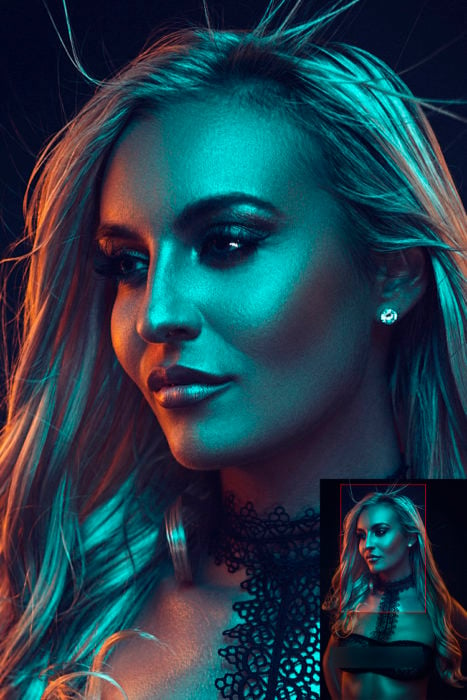
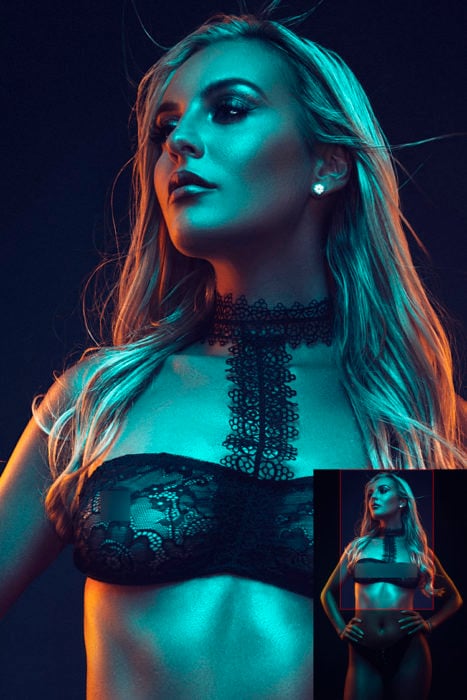
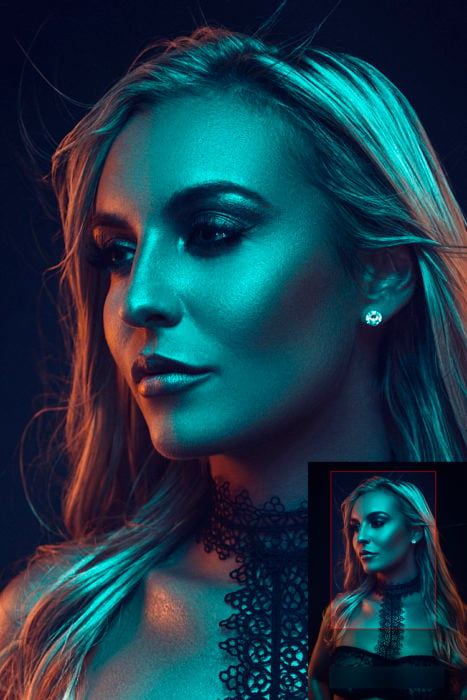
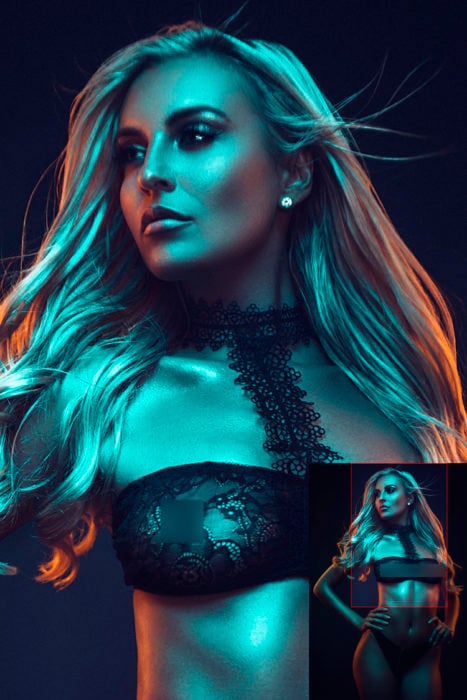
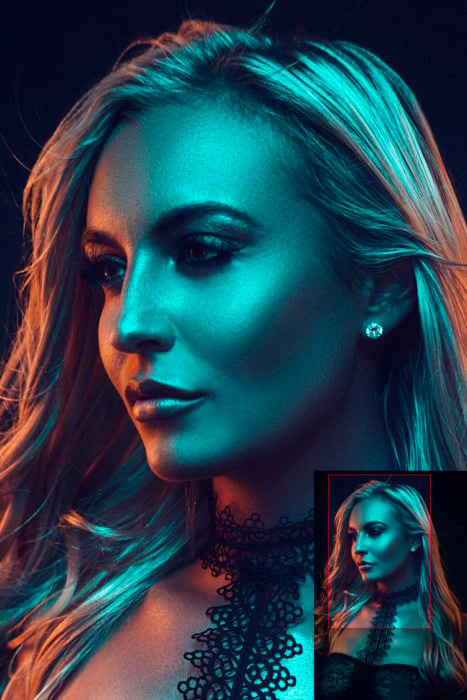
Thoughts
The Vintage – First off it’s no shocker to see that the 50 year old lens is not up to the same standards as the modern lenses, we hardly needed to read a review to find that out. In the 3/4 length shot you can clearly see how soft it is at the edges and up around the face is loses a lot of definition and sharpness. It would also appear that it struggles with highlights greatly and the detail gets lost almost instantly as the brightness gets anywhere near a highlight. You can see in the headshot that the cheek bone highlight gets blurry due to flaring in the lens.
The Old – This lens has been a workhorse for me and I’ve never had cause for complaint. In the 3/4 length shot again you can start to see a slight blurring at the top of the head at the extremities of this lenses focal plane. Once again I would also say that the headshot sees a very small amount of flaring from the highlights and the pores loose a little definition in the cheek bones highlights because of it. Am I picking holes in this lens? Yes. Do I consider these to be usable and saleable commercial images? Yes.
The New – As you’d expect, the images taken with this lens are great. At first glance the 3/4 length shot may appear to be less than tack sharp to you and I’d agree with you. Personally I don’t think this is a fault in the lens, I think this is a byproduct of ‘focus and recompose’. You focus on the head and then make minor adjustments in the composition which renders the desired area slightly out of focus. I wrote an article on the effect here to better explain whats going on: ‘Stay Focused’. But apart from user error you can see that the image as a whole looks clean and clear from edge to edge.
On the headshot we see the same thing and for me the most noticeable differences here are the detail in the highlights. The cheek bone highlights retain all of the pore detail and the shadow areas in those pores are not loosing darkness due to flaring from the surrounding highlights.
More History (sorry)
So what does all this mean to me and why did I bother writing an article on something we as photographers should instinctively know by now? It’s obvious that newer lenses create better photographs. It is obvious but I think we may sometimes loose a little perspective on this ‘better’ scale.
Take the vintage 43-86mm lens, remember this is reputed to be the ‘worst’ Nikon lens ever, this lens is older than most of its owners and to put it into perspective, one year before this lens came to market audio tapes were invented. That is crazy, you’d expect a lens that is dubbed as the worst lens ever and made at a time before pocket calculators that it would be like shooting through an old sock! It just isn’t. Yes it’s soft, yes it’s blurry at the edges, yes it flares at the highlights but it’s still usable and frankly a shot taken with this lens and displayed in the most common format of our generation i.e. our phones, nobody would ever know.
Ok so lets fast forward nearly half a century and compare what Nikon is up to now. The older 28-105mm lens that I’ve been using for over ten years and taken literally tens of thousands of frames without incident, repair or service, how did those images compare? Pretty damn good in my opinion, yes its an ‘old’ lens but I have shot commercial jobs on it for my entire career. It’s images are in books, magazines, Adshels, posters and nearly every other printed media out there and I’ve never once thought ‘oh that’s a bit soft/flat/distorted’. That lens is an absolute workhorse and neither you or anybody else could expect any piece of engineering to withstand those years of day-to-day use and abuse with very little tender loving care with zero maintenance or repair.
Move forward a few more years and we’ve got Nikon’s latest and greatest zoom lens (almost latest, a newer VR version has now been released). As you’d expect this lens takes fantastic shots but is it a quantum leap forward from the older 28-105mm I had? No I don’t think it is.
It’s simply just physics at this point, in fact camera sensor technology is getting so damn good now that we’re literally starting to see the physical glass of the lens in our shots. Making something physically solid yet completely transparent was black-magic a few hundred years ago but glass has been around since 3500 BC, we have been refining it for a while now and we’re getting pretty damn good at it. But a lens isn’t all about sharpness. This lens is very fast through the range and having that f2.8 has already helped me out on a shoot after only having it for a week. It’s also a lot quieter to focus than the old one and it focuses a lot faster and in lower lighting, there’s no mistaking this a far superior lens.
![]()
In Conclusion (you made it)
Lens technology has in my opinion crawled along. We’ve been working with glass for over 4500 years so its understandable that we already had a handle on it 50 years ago. The apparent slow growth of lens improvements is nobodies fault, you can’t blame them for ‘nailing it’ right out of the gate. Smarter electronics and software companies nail it straight away all the time but slowly drip feed those improvements and updates to eek out the consumer budgets. It’s just business.
All I’m saying is that even the WORST NIKON LENS is still actually pretty damn good.
Don’t fall foul to thinking you always need the latest and the greatest lighting, camera body or lens. What would give you better shots, spending £1000 on a slightly updated lens or spending £1000 on 3 or 4 awesome location shoots with professional models, stylists and makeup artists?
I think you know the answer.
![]()
Why not let me know your thoughts. Have you bought a lens that you felt revolutionized your images and portfolio? If so I’d love to know which lens it was. Or have you been holding off buying a new lens and think your money would be better spent on a few awesome photoshoots? Fire away in the comments below and as always if you have any questions I’ll do my best to answer them.
About the author: Jake Hicks is an editorial and fashion photographer based in Reading, UK. He specializes in keeping the skill in the camera and not just on the screen. You can find more of his work and writing on his website, Facebook, 500px, Instagram, Twitter, and Flickr. This article was also published here.